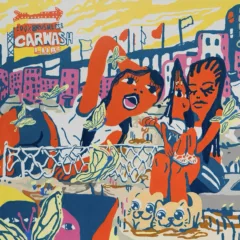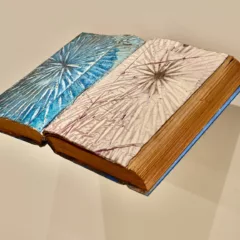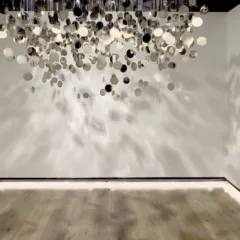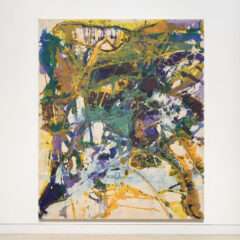Ripples and refractions are the name of the game at Locks Gallery throughout the month of November. Internationally renowned British painter Kate Bright brings her canvases to Philadelphia for a showcase of her most recent work – an exhibit entitled In Deep.
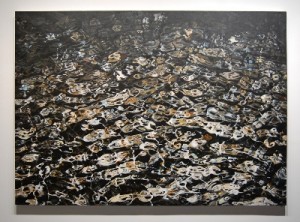
About a decade younger than the notorious Young British Artists like Damien Hirst, Kate Bright has always embraced the formal elements of painting in stark contrast to her conceptual contemporaries. Her current Pool Series is exactly what it sounds like: painted views of different bodies of water, specifically swimming pools and park side fountains. She renders watering holes like a current-day David Hockney, minus the human element; they are inviting but notably unpopulated.
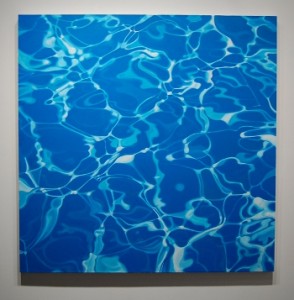
The patterns produced by the artist are unmistakable. Everyone has seen distorted light through the choppy surface of a pond or the dancing reflections from a swimming pool. Bright renders these textures with crisp realism, although their lack of anchors to physical objects makes them nudge up against total abstraction. These watery images are profound, universal and have tantalized the imaginations of people since people had imaginations.
Water is as life-giving as it is powerful and dangerous. It shapes the earth with rivers while occupying vast oceans and tiny puddles. The seas were both the bane of ancient travelers and their primary means by which to travel. An aquatic reflection also served as the first mirror, as represented by the myth of Narcissus. All of these interpretations and more flood over the viewer who confronts these paintings, while the artist herself provides little means to escape the deluge. As the liquid retains its unmistakable form, the only things that change in Bright’s paintings are, paradoxically, the solid bottoms of the basins.
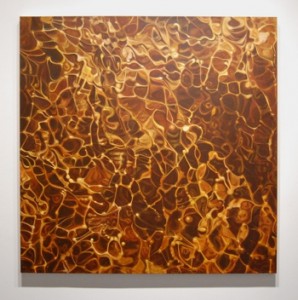
Each of the artworks is clearly a variation on a theme, but possesses its own distinct personality. The colors utilized range from a multitude of light and dark blues to ochre, brown and black. Chlorinated, tiled swimming pools are generally depicted with a heavily blue palette while others such as “Grotto” are shadowy and barely verge on the traditional hues of water at all. Particularly notable are a couple of canvases named after the fictional river Styx. This pair includes the warmest palette in the show, laced with bands of yellow over layers of deep bronze. Bright also includes tiny amounts of glitter or crushed glass in her pigments to further the illusion of a sparkling reservoir.
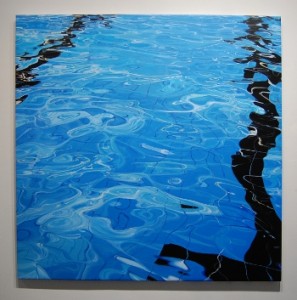
One would expect that these intricate imitations of Earth’s most vital resource would be direct copies of photographs, but the artist uses pictures only as a starting point. Most of the painting is done in an improvised fashion, with photos serving merely as a reference. This process of defying exact reproduction in favor of expression can, and perhaps should, be described as fluid. As a swimmer herself, having spent a great deal of time around water, Bright favors intuition over replication. Clearly this method works well for her since the distorted, underwater lines of swimming lanes look strikingly photographic.
Whether viewed as abstract painterly expressions or symbolic studies of liquid, Kate Bright presents paintings that are as detailed in their execution as they are in their implications. Water rightfully has one of the strongest and longest ties to the human psyche and these paintings capture the instinctual need as well as desires for recreation, refreshment and spiritual cleansing. In Deep will be on display at the Locks Gallery through December 5.


